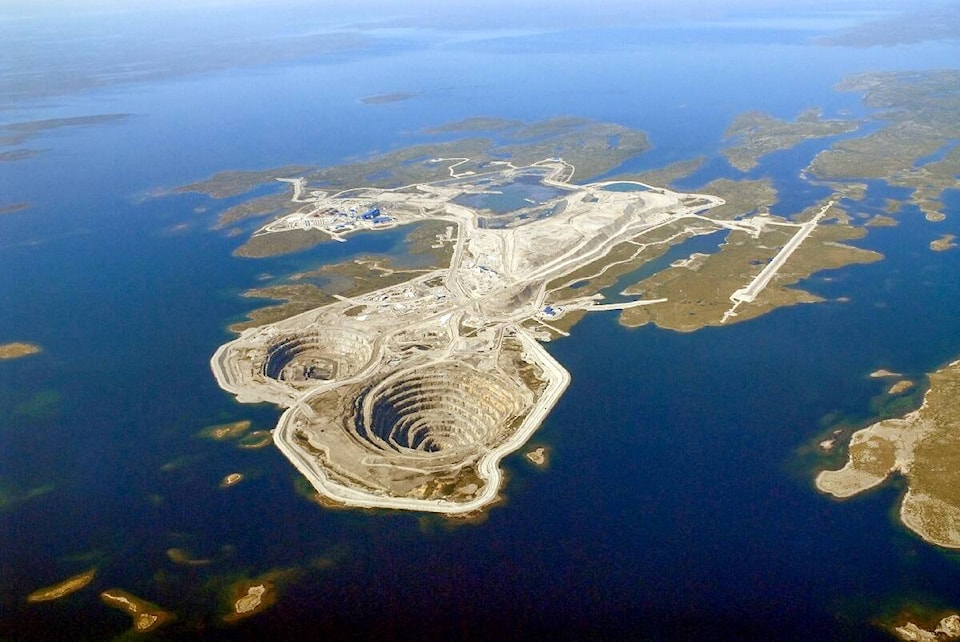Dear editor,
I recently had the opportunity to read Katłı̨à Lafferty’s Northern Wildflower column in the Dec. 6 News/North. In reading the column, I appreciated the overview and history of how the Mackenzie Valley Environmental Impact Review Board was established. Ms. Lafferty provides some very good points about the need for a resource co-management board, such as the Review Board, to be representative of the communities and regions that can be impacted by developments and the decisions for them to go ahead or not. I also agree that any environmental impact review process must provide lots of meaningful opportunities for the public to participate and to voice their concerns.
Related: Invoking the Indian Brotherhood
Ms. Lafferty was concerned that some Indigenous governments without completed land claim agreements or who have not signed on to devolution might not be fairly represented on the Board. She also was concerned that some Indigenous governments and members of the public might not participate in our processes equally. I felt compelled to respond to some of the information and opinions in her column, based on my first-hand experience as the Chair of the Review Board since 2014. Some clarifications I would like to offer are as follows:
- The Review Board process is public and inclusive, regardless of the region or land claim area where a development is proposed,
- The members of the Review Board are nominated by Indigenous, Federal or Territorial Governments, but are not “representative” of any of them, and
- The Review Board has had members from all regions of the Mackenzie Valley and devolution has no effect on Board members’ composition.
To the first point, the Review Board’s process is set out by the Mackenzie Valley Resource Management Act and its own guidelines on how to conduct impact assessments. The Review Board runs a very public and inclusive process that considers diverse perspectives. It makes its decisions based on the evidence, including Indigenous Traditional Knowledge, and on considerations outlined in the Act. The Review Board runs very inclusive processes with lots of opportunities for public participation.
For every environmental assessment, the Review Board must protect the environment and the social, cultural, and economic well-being of residents and communities in the Mackenzie Valley. The Board must also consider the importance of conservation to the well-being and way of life of Indigenous people. To do this the Review Board depends on the participation and input of Indigenous and community governments that represent those who may be most affected by the project (regardless of which region they are in), along with government expert departments and other parties.
The Board also heavily relies on direct input from members of the public about how they may be affected by proposed developments. The Board builds in many opportunities for this during the assessment process, through community meetings, workshops, and most importantly through public hearings in potentially affected communities. We always hold hearings in communities near the project. We design our processes to let Board members hear directly from community members about how the proposed project would affect the Land and people. Our hearings are quite like those done during the Berger Inquiry, and as Ms. Lafferty suggested should be done again.
The Board members listen carefully and think about what people told them making Board decisions about the project and its impacts. It takes what it hears seriously. All public comments become part of the public record and must be considered by the Board when it makes its decision. In fact, the Board made a difficult decision to reject a proposed development based almost wholly upon what it heard in community public hearings. This happened in a region without a settled modern land claim.
To the second point, the Review Board has a balance of Indigenous and non-Indigenous members. Its decisions reflect their worldviews. The Board is required to not only have a view towards the protection of Indigenous communities and residents, but also must consider how projects may affect the environment and all residents of the Mackenzie Valley. All environmental assessments are designed to be transparent to ensure fair, accessible, and accountable decisions.
Members of the Review Board are nominated by an Indigenous, territorial or federal government, but once on the Review Board, each member is independent, not representing the views of the nominating organization. Each member is appointed to bring their own views, values and experiences into the Board’s decision making process. This is fundamental for an independent decision body.
To the third point, devolution has not affected our appointment process. All Review Board appointments continue to be made by the Minister of Northern Affairs Canada, just like before devolution. Ms. Lafferty was concerned that regions without modern land claims and self government agreements could not nominate Board members. Even though regions without modern land claims can’t nominate a Review Board member, (with the exception of the Dehcho First Nation, which has special nominating powers through its interim measures agreement), we have had many members appointed to the Board from regions without land claims. Board members come from all regions of the Mackenzie Valley. Since 2008 our Chairpersons have been from regions without land claims.
We share the author’s priority of enabling and encouraging the public to take part in our assessment and that the composition of the Review Board should reflect all regions of the Mackenzie Valley. The Review Board is always open to hearing how people view our process, either positive or negative. We are committed to constantly improving the way that we do impact assessments, to ensure the protection of the environment and the well-being of residents of the Mackenzie Valley. I invite Ms. Lafferty to come talk with the Board’s staff to discuss my response, to learn more and to discuss ways to improve the work that we do. We also welcome other members of the public to do the same.
Joanne Deneron, chair
Mackenzie Valley Review Board
